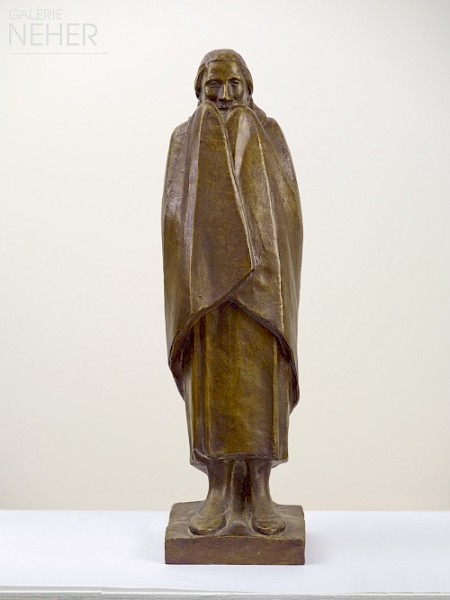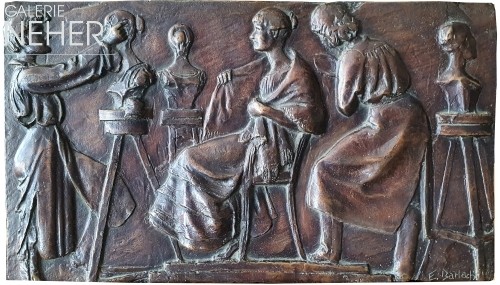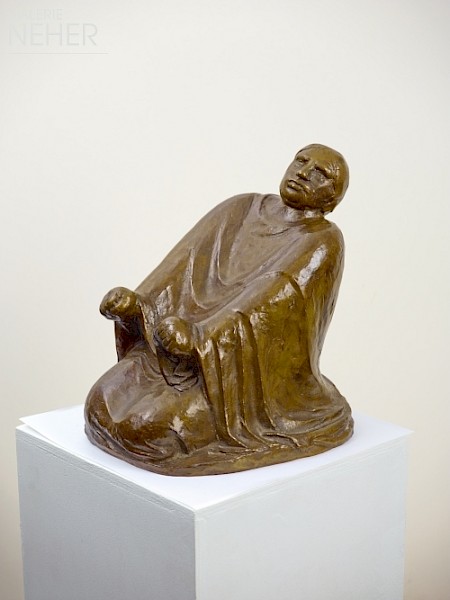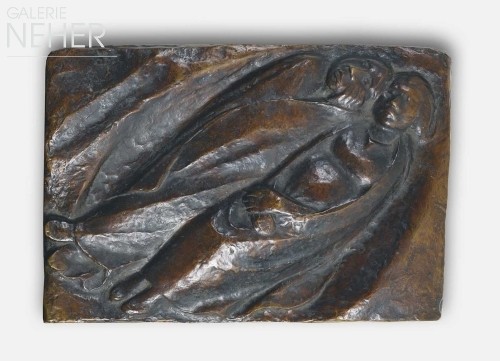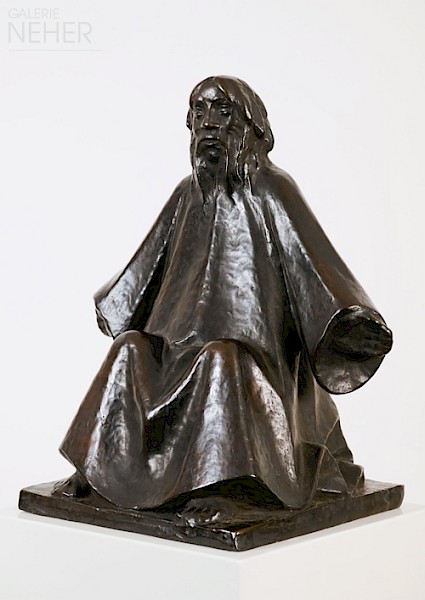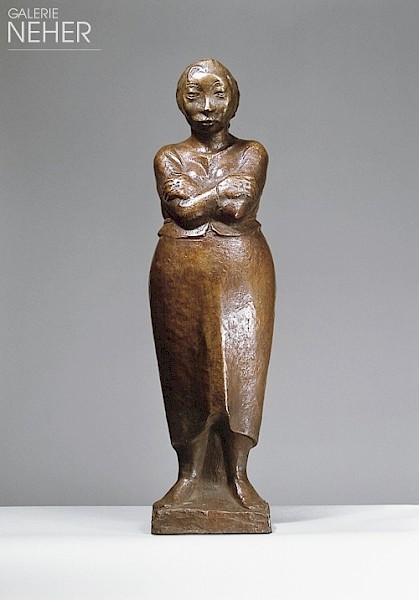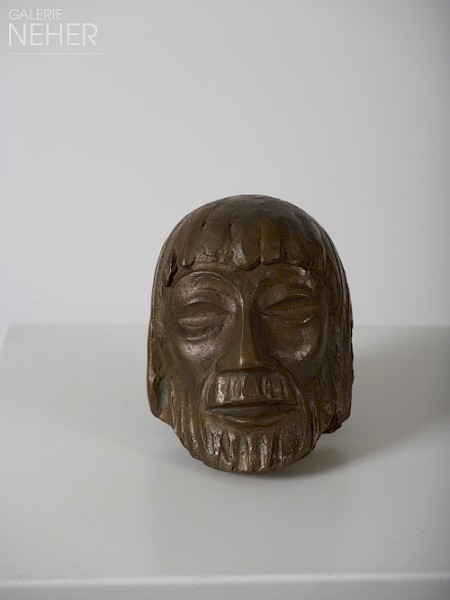Ernst Barlach - Frierendes Mädchen (Freezing Girl), 1916
Bronze
49 x 13 x 12 cm
19 x 5 x 4 inch
signed on left of base: "E. Barlach"
Foundry stamp: "H. NOACK BERLIN"
Edition size of 25, unnumbered cast in 1980s
N 9167
Expertise:
Ernst Barlach Lizensverwaltung, Ratezburg
Provenance:
Estate of Ernst Barlach, Ratzeburg
Catalogue raisonné:
Elisabeth Laur, Ernst Barlach. Werkverzeichnis, Vol. 2, Das plastische Werk, Güstrow 2006,
No. 243, with ill. p. 146
Exhibitions:
Essen, Galerie Neher, KUNST AUS DEM 20. JAHRHUNDERT FRÜHJAHR 2020 Sonderausstellung zum 150. Geburtstag von Ernst Barlach 5 Plastiken und 1 Relief März bis Mai 2020 ( Abbildung im Folder)
Ernst Barlach - Frierendes Mädchen (Freezing Girl), 1916
Bronze
49 x 13 x 12 cm
19 x 5 x 4 inch
signed on left of base: "E. Barlach"
Foundry stamp: "H. NOACK BERLIN"
Edition size of 25, unnumbered cast in 1980s
N 9167
Expertise:
Ernst Barlach Lizensverwaltung, Ratezburg
Provenance:
Estate of Ernst Barlach, Ratzeburg
Catalogue raisonné:
Elisabeth Laur, Ernst Barlach. Werkverzeichnis, Vol. 2, Das plastische Werk, Güstrow 2006,
No. 243, with ill. p. 146
Exhibitions:
Essen, Galerie Neher, KUNST AUS DEM 20. JAHRHUNDERT FRÜHJAHR 2020 Sonderausstellung zum 150. Geburtstag von Ernst Barlach 5 Plastiken und 1 Relief März bis Mai 2020 ( Abbildung im Folder)
About the work
Barlach was only too well aware of the phenomenon of initially only creeping, then penetrating cold from early childhood. As the eldest son he was expected to accompany his father, the general physician Dr. Georg Barlach, on his nocturnal visits to treat his sick patients, particularly because they often lasted much longer than planned. In his autobiography "Ein selbsterzähltes Leben", he noted pointedly: "My father... did not in his own words operate as an 'express doctor' and at the patients' bedside would forget about freezing horses, coach and child." During his training as a reservist in the First World War, his susceptibility towards the cold and frost only deepened, as he had to endure both in substantial measure.
The Freezing Girl touches us. We sense that the work has been inspired by Barlach's own experiences. She stands calmly before us, her feet firmly planted on the ground, occupying a small space: We are left in no doubt that she cannot escape the cold. We are offered no perspective, and the solidity of the plinth and her firmly rooted feet merely underscore the ineluctability of her situation.
By confining the surface area, Barlach is directing the viewer's attention to the answer to the question: What is the young woman's response to the intense physical cold? In order to attain a convincing execution of his chosen theme, Barlach places the emphasis on the face, the focal point of its meaning, whereas the plain garment recedes into the background. The girl is wearing a broad cape which she pulls tightly to her face with her concealed hands to create two large overlapping folds.
At once the defensive posture of her hands/upper arms beneath the garment become readable: Together with the tightly drawn fabric, they form a kind of double shield, whose optical heft is reinforced by the woman's visibly drooping shoulders and the attendant inclined angle of the head.
Of decisive importance in resolving the issue of how the young woman will eventually deal with her plight are her facial features. Instead of a non–convex rendering of her eyeballs, two simple indents carry the overall statement. One could have expected a care–worn, perhaps grim expression, but Barlach opts for a different emphasis. Although the softness of her facial features underscores her vulnerability and exposure to the biting frost, ultimately the shivering girl does not appear to be desperate; rather a stoical impression prevails, which connotes a mental strength: It IS cold, I AM at the mercy of the frost, but I won't necessarily be defeated by the situation. A more distant, overall perspective reinforces the conviction that this young woman is capable of coping with her miserable predicament. Consequently, she fits quite well into Barlach's cannon of motifs. He frequently portrays individuals facing setbacks or cruel twists of fate. But rather than experiencing this as a catastrophe, they perceive it as an acknowledged necessity, never – however frequently – to lose heart and succumb. Here Barlach's psychologically highly attuned creativity prompts us to draw such a conclusion.Writing about himself, Barlach once stated that "... a frosty December morning can be a mirror: The person one recognises must be accepted and experienced."
Text authored and provided by Horst Müller
